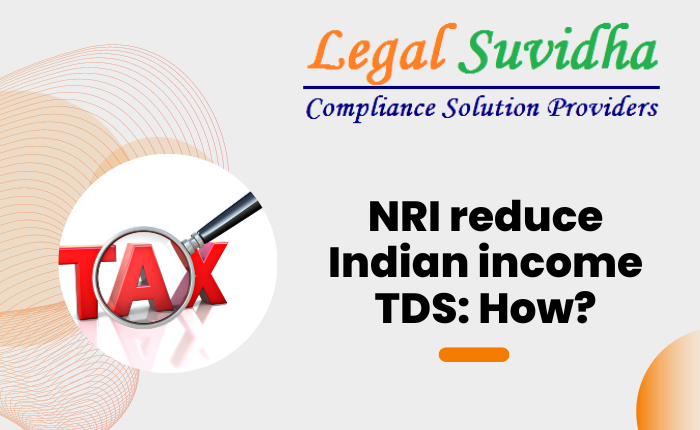For people who love traveling and earning money in India while living abroad (NRI), managing their finances can be both exciting and challenging. To make sense of the financial rules, it’s crucial to understand a thing called TDS, which stands for Tax Deducted at Source, as per Section 195 of the Income Tax Act. This concept helps determine how much tax should be taken out of your income when you’re involved in financial transactions that cross international borders.
- If you’re an NRI, you can explore some smart investment options that not only protect your financial future but also reduce your tax burden.
- These options include things like life insurance plans, the National Pension System (NPS), and certain types of mutual funds known as ELSS funds.
- By making use of these investment opportunities, you can set yourself up for financial success in the global economy.
Now, let’s take a closer look at some strategies NRIs can use to lower the TDS (tax deducted at source) on their income generated from India.
TDS on Payments to Non-Residents:
Imagine you need to pay money to someone living outside India, like an NRI. According to Section 195 of the Income Tax Act, you’re supposed to deduct a portion of that money as tax (TDS) before you make the payment, but only if the money you’re paying is considered income for the NRI in India.
Tax-Saving Tips for NRIs:
Here are some ways NRIs can reduce the TDS under Section 195:
- Sometimes, NRIs find that too much tax is being taken from their income (TDS under Section 195) compared to their actual annual tax liability.
- But there’s a solution: Section 197 of the IT Act allows NRIs to apply for reduced or even zero TDS by filling out a form called Form 13.
- This form asks for information like your name, PAN (a special identification number), your income for the past three years, and your estimated tax for the current year.
- Keep in mind, that when you’re selling property, the buyers are supposed to withhold 20% of the payment as TDS. But NRIs can use Form 13 to reduce this withholding.
- Tax deductors can also use Form 15E to calculate the correct TDS amount. Plus, NRIs can benefit from lower TDS rates by using tax treaty rules, but they’ll need certain documents like a Tax Residency Certificate.
For example, let’s say you’re an NRI from the UAE, and you’re earning interest income in India. Without the right documents, you might have to pay a high 30% TDS rate. However, with the proper paperwork, like a tax treaty between India and the UAE, you could potentially lower that rate to just 12.5%.
Utilize Double Taxation Avoidance Agreements (DTAA):
- NRIs can use something called Double Taxation Avoidance Agreements (DTAA) to reduce the TDS they have to pay.
- These agreements are like special deals between India and other countries to prevent double taxation on the same income.
- They come in handy for things like Interest Income from NRO Accounts, Government Securities, Loans, and Fixed Deposits with Companies.
- Without DTAA benefits, the TDS rate on NRO Fixed Deposits can be really high at 30.90%. But under DTAA, you can enjoy lower and more favorable tax rates on your Interest Income, which could be as low as 10% to 15%.
Forms for TDS Exemption for NRIs:
- NRIs can avoid TDS on their income by filling out two important forms: Form 15G and Form 15H.
- Form 15G is for regular individuals and families, while Form 15H is specifically for senior citizens.
- You can use these forms when your total income falls below the taxable limit.
- NRIs can claim exemptions on various types of income, like long-term gains from stocks and certain mutual funds, as well as interest from NRE and FCNR deposits, and income from savings schemes like PPF and NSC, by using these forms.
If You have any queries then connect with us at [email protected] or [email protected] & Contact us & stay updated with our latest blogs & articles


![Received an Income Tax Notice in India? Don’t Panic — Here’s Exactly What to Do [2025 Guide] 1 Income Tax Notice](https://legalsuvidha.com/wp-content/uploads/2025/12/Income-Tax-Notice.png)
![Cyber Crime FIR in India: How to File Complaint for Online Fraud, Banking Fraud & Digital Harassment [2025 Guide] 2 Cyber Crime Complaint](https://legalsuvidha.com/wp-content/uploads/2025/12/Cyber-Crime-Complaint.png)
![Trademark Infringement in India: How to File Legal Action & Protect Your Brand [2025 Guide] 3 Tradenark Infrigement](https://legalsuvidha.com/wp-content/uploads/2025/12/Tradenark-Infrigement.png)
![Property Title Verification in India: How to Check Clear Title in 7 Steps [Avoid Property Fraud – 2025 Guide] 4 Property Titles Verification](https://legalsuvidha.com/wp-content/uploads/2025/12/Property-Titles-Verification.png)



